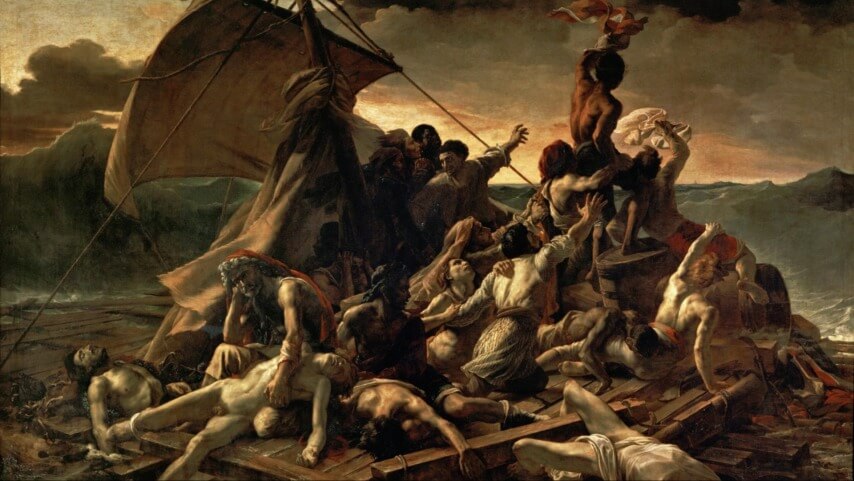Strangest fact: As of 1884, the Custom Of The Sea directly conflicts with maritime law. Two crew members of the shipwrecked Mignonette killed and ate a fellow lifeboat passenger after he fell unconscious from hunger. An English court ruled that, even if they had drawn lots instead of picking their weakest compatriot, killing was not justified in any instance. The proper, stiff-upper-lip, British thing to do would have been for everyone to starve to death. The cannibals were sentenced to death, although that was commuted to six months in prison. Since then, no British sailors have admitted to killing someone for food, but a few have eaten fellow crewmen who they claim had already died a natural death.
Thing we were happiest to learn: Previous judges were more understanding. The first documented case of maritime cannibalism seems to be an English ship on a short jaunt in the Caribbean who were caught in a storm and lost at sea. After two weeks without food, one sailor suggested drawing lots to determine who would sacrifice himself to feed the others. Fate, never without a sense of humor, gave the idea man himself the short straw. The others, who survived to make landfall, were put on trial for his murder, but the judge ruled their crime was “washed away” by “inevitable necessity.”
Thing we were unhappiest to learn: The part of the custom where the process is handled fairly is more honored in the breach than the observance. Rather than draw straws, the lowest-status members of the crew were often the victims, and with depressing predictability, that usually meant anyone on board who was Black. When no people of color were available, the youngest on board were usually the first to go. The captain of the capsized Francis Spaight, after two weeks without food, decided to draw lots, but only among the four teenage apprentices, reasoning that without spouses or dependents, they “could not be considered so great a loss to their friends.” The victim ended up being 14-year-old Patrick O’Brien (no relation to the aforementioned novelist, although the writer’s real name is Patrick Russ, which leaves us wondering if he chose his pen name to honor a murdered-and-eaten cabin boy).
Best link to elsewhere on Wikipedia: Alongside immortal short stories like “Fall Of The House Of Usher,” “The Cast Of Amontillado”, and “The Tell-Tall Heart,” and poems you had to memorize in school “The Raven” and “Annabel Lee,” Edgar Allen Poe completed only one full-length novel. The Narrative Of Arthur Gordon Pym Of Nantucket starts out as a classic seafaring adventure, with the title character stowing away aboard a whaling ship, and surviving shipwreck, mutiny, cannibalism, and eventual rescue. As it goes however, the story “becomes increasingly strange and hard to classify,” as one would expect from Poe. He later called it, “a very silly book,” but its influence spread to Herman Melville, Jules Verne, and H.P. Lovecraft.
Further down the Wormhole: The circumstances surrounding the Mignonette were more dire than most, as the ship was adrift 1,600 miles from the Cape Of Good Hope, which would have put them more or less in the direct center of the ocean. European sailors only learned the Cape existed in 1511, when Portuguese admiral Alfonso de Albuquerque “recovered” a map from a Javanese pilot. Albuquerque was considered “probably the greatest naval commander of the age,” conquering the Indian state of Goa, and blocking the other European powers from access to the Indian Ocean. Late in life, he served as governor of Goa and a diplomat, and at one point received an envoy sent from queen Eleni of Ethiopia. Albuquerque wept with joy, believing to have finally made contact with the legendary ruler Prester John, revered by medieval Christians, despite the slightly inconvenient fact that he didn’t actually exist. We’ll print the legend next month.









































